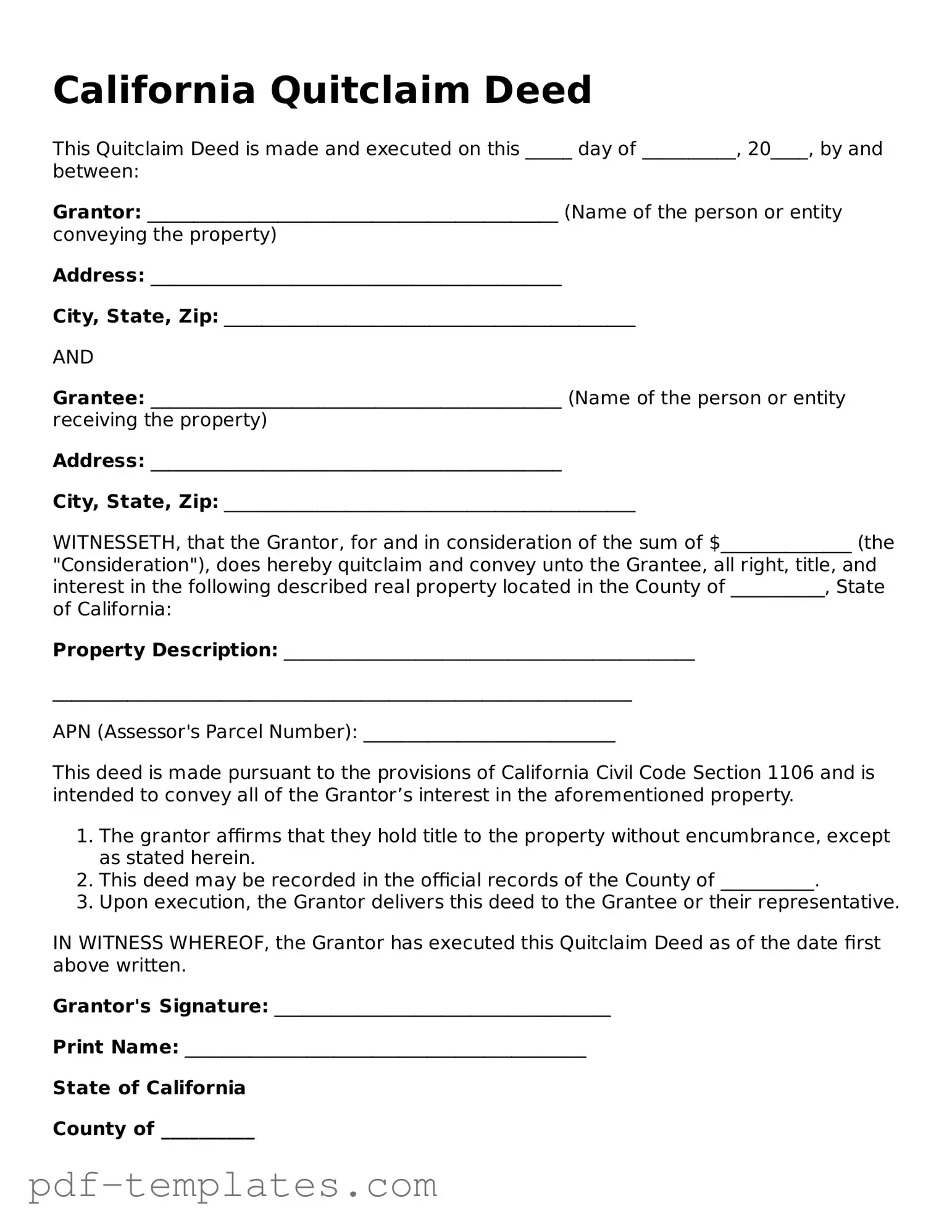A Grant Deed is quite similar to a Quitclaim Deed in that it transfers ownership of real property from one party to another. However, the key difference lies in the warranties provided. A Grant Deed guarantees that the seller has not only the right to sell the property but also that the property is free from any undisclosed encumbrances. This added layer of protection makes it a more secure option for buyers who seek assurance about their new property’s title.
A Warranty Deed offers even more protection than a Grant Deed. It provides a full guarantee that the seller holds clear title to the property and will defend against any claims. This document is often used in transactions where the buyer wants to ensure that they have absolute ownership without any past claims or liens. While a Quitclaim Deed simply transfers whatever interest the seller has, a Warranty Deed affirms the seller's commitment to a clear title.
A Bargain and Sale Deed is another document that resembles a Quitclaim Deed but with some distinctions. This type of deed implies that the seller has the right to sell the property but does not provide any warranties regarding the title. It’s often used in foreclosure sales or tax sales, where the seller may not have complete knowledge about the property’s history. Like the Quitclaim Deed, it transfers ownership without guaranteeing the absence of liens or claims.
A Special Warranty Deed is similar in that it transfers ownership of real estate, but it only warrants the title for the time the seller owned the property. This means that any issues arising before the seller’s ownership are not covered. This document is often used in commercial real estate transactions, where the seller may not want to take on the risk of past claims, making it a middle ground between a Quitclaim Deed and a Warranty Deed.
An Affidavit of Title is not a deed but is often used in conjunction with deeds to clarify the seller’s ownership status. This document is a sworn statement confirming that the seller has the right to sell the property and that there are no undisclosed liens or claims against it. While a Quitclaim Deed transfers interest without guarantees, an Affidavit of Title provides additional assurance to the buyer regarding the seller's ownership.
A Leasehold Deed conveys a property for a specified period, typically for leasing purposes. While a Quitclaim Deed transfers ownership outright, a Leasehold Deed allows the lessee to use the property for a set time while the lessor retains ownership. This type of document is common in rental agreements and can be beneficial for both parties when clear terms are established.
For individuals interested in acquiring a horse, utilizing a well-prepared document is vital. The process can start with understanding the importance of a comprehensive Horse Bill of Sale form, which you can find more about here.
Lastly, a Life Estate Deed is a unique form of property transfer that grants ownership to one person for their lifetime, after which the property passes to another designated individual. This differs from a Quitclaim Deed, which transfers ownership immediately and without conditions. A Life Estate Deed allows for continued use and enjoyment of the property while planning for future ownership, making it a valuable tool for estate planning.
